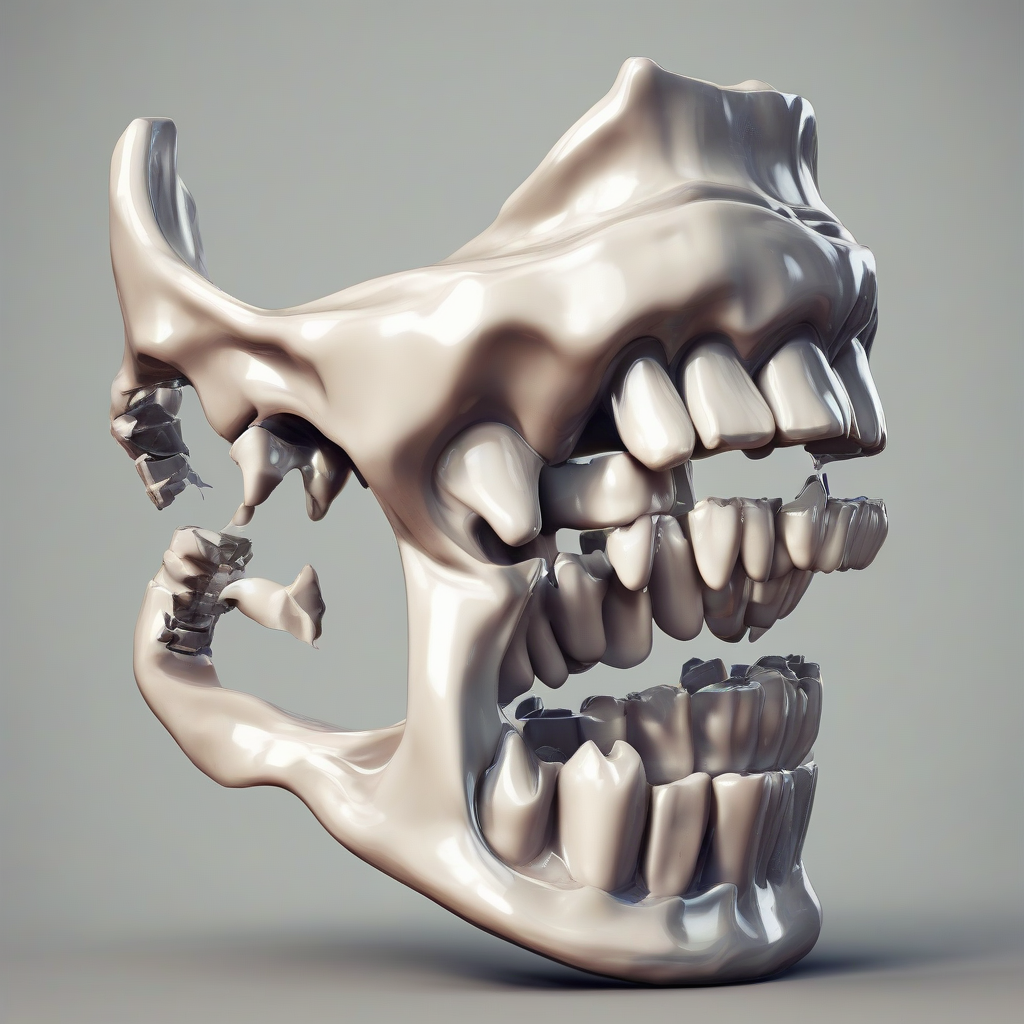
Understanding and Managing a Broken Molar with a Filling: A Comprehensive Guide
A broken molar with a pre-existing filling presents a complex dental issue requiring prompt attention. The severity of the situation varies considerably depending on the extent of the fracture, the type of filling material, and the overall health of the tooth. This comprehensive guide explores the various aspects of this problem, from understanding the causes and symptoms to outlining treatment options and preventative measures.
Causes of a Broken Molar with a Filling
Several factors can contribute to a molar fracturing, even if it already has a filling. These include:
- Bruxism (Teeth Grinding): The constant pressure from teeth grinding can weaken tooth enamel over time, making molars susceptible to fracture, especially those with existing fillings.
- Clenching: Similar to bruxism, clenching the jaw puts excessive stress on the teeth, potentially leading to cracks and fractures.
- Trauma: A direct blow to the face or mouth, such as from a fall or impact during sports, can easily fracture a tooth, regardless of existing fillings.
- Decay Under the Filling: Even with a filling, decay can occur beneath the surface, weakening the tooth structure and making it prone to breaking.
- Weak Tooth Structure: Some individuals naturally have weaker tooth enamel or dentin, predisposing them to fractures even with dental restorations.
- Age-Related Changes: As we age, tooth enamel can become thinner and more brittle, increasing the likelihood of fracture.
- Old or Inadequate Fillings: Older fillings, particularly those made of materials like amalgam, may not provide sufficient support and can contribute to tooth fracture.
Symptoms of a Broken Molar with a Filling
Recognizing the signs of a broken molar is crucial for timely intervention. Symptoms can vary depending on the severity of the fracture, but common indicators include:
- Sharp Pain: A sudden, sharp pain, particularly when biting or chewing, is a common symptom.
- Sensitivity to Temperature: Increased sensitivity to hot or cold foods and drinks.
- Lingering Pain: Persistent discomfort even when not actively chewing.
- Visible Crack or Fracture: In some cases, a crack or fracture may be visible in the tooth.
- Loose Filling: A partially dislodged or loose filling.
- Swelling or Inflammation: If the fracture reaches the pulp (inner part of the tooth), swelling and inflammation can occur.
- Difficulty Chewing: Pain or discomfort when chewing on the affected side.
- Discoloration: The tooth might appear darker or discolored.
Diagnosis of a Broken Molar with a Filling
A dentist will conduct a thorough examination to diagnose a broken molar with a filling. This typically involves:
- Visual Examination: A careful inspection of the tooth to identify any visible cracks or fractures.
- Dental X-rays: X-rays provide a detailed view of the tooth’s internal structure, revealing hidden cracks or decay.
- Transillumination: A light is shone through the tooth to detect internal cracks or fractures.
- Percussion Test: The dentist taps gently on the tooth to assess for any tenderness or pain.
- Palpation: The area around the tooth is examined for any swelling or tenderness.
Treatment Options for a Broken Molar with a Filling
The best treatment option depends on several factors, including the extent of the fracture, the location of the crack, and the overall health of the tooth. Common treatments include:
- Dental Filling Repair: If the fracture is small and superficial, a simple repair of the existing filling may suffice.
- Crown: A crown is a cap that covers the entire tooth, providing protection and restoring its shape and function. This is a common treatment for more extensive fractures.
- Root Canal Treatment: If the fracture reaches the pulp, causing infection or inflammation, a root canal is necessary to remove the infected pulp and prevent further damage.
- Extraction: In severe cases, where the tooth is severely damaged or beyond repair, extraction (removal of the tooth) may be the only option.
- Dental Implants: If the tooth is extracted, a dental implant can be used to replace the missing tooth and restore function and aesthetics.
- Onlay: Similar to a crown but only covers a portion of the tooth, an onlay is used for fractures involving significant tooth structure loss but not the entire tooth surface.
Preventing Broken Molars
While some fractures are unavoidable, several preventative measures can significantly reduce the risk:
- Wear a Mouthguard: If you participate in contact sports or grind your teeth, wearing a mouthguard is crucial to protect your teeth from trauma.
- Manage Bruxism: Treating bruxism, such as through stress management techniques, mouthguards, or Botox injections, can minimize the wear and tear on your teeth.
- Maintain Good Oral Hygiene: Regular brushing, flossing, and dental checkups can help prevent decay and maintain the strength of your teeth.
- Avoid Hard Foods: While not always possible, limiting consumption of exceptionally hard foods can help prevent chipping or fracturing.
- Regular Dental Checkups: Regular visits to the dentist are crucial for early detection and treatment of any dental problems, including potential fractures.
Long-Term Outlook and Aftercare
The long-term outlook for a broken molar with a filling depends largely on the chosen treatment and the patient’s overall oral health. With proper treatment and diligent aftercare, most patients can regain full functionality and aesthetic appearance of their teeth. Aftercare instructions typically include:
- Pain Management: Following a procedure, pain medication may be prescribed to manage any discomfort.
- Oral Hygiene: Maintaining meticulous oral hygiene practices is essential to prevent infection and promote healing.
- Diet Modifications: A soft food diet may be recommended initially to protect the treated tooth.
- Follow-up Appointments: Regular follow-up appointments with the dentist are crucial to monitor healing and address any complications.
- Avoiding Harmful Habits: Quitting harmful habits like smoking can significantly improve healing and overall oral health.
Complications and Risks
While most cases of broken molars with fillings are successfully treated, potential complications and risks exist, including:
- Infection: If the fracture reaches the pulp, infection can occur, potentially requiring root canal treatment.
- Tooth Loss: In severe cases, tooth loss may be unavoidable.
- Abscess Formation: An abscess can form at the root of the tooth if infection is not addressed promptly.
- Damage to Adjacent Teeth: The fracture may affect nearby teeth.
- Treatment Failure: There is always a small risk that the chosen treatment may not be entirely successful.
Choosing the Right Dentist
Selecting a qualified and experienced dentist is crucial for optimal treatment outcomes. Consider these factors when choosing a dentist:
- Experience and Expertise: Choose a dentist with extensive experience in treating complex dental issues like broken molars.
- Credentials and Qualifications: Verify the dentist’s credentials and ensure they are licensed and qualified to perform the necessary procedures.
- Technology and Equipment: Ensure the dentist utilizes modern technology and equipment to accurately diagnose and treat dental problems.
- Patient Reviews and Testimonials: Research the dentist’s reputation by reading patient reviews and testimonials.
- Communication and Comfort: Choose a dentist who communicates effectively and makes you feel comfortable and at ease.
Cost Considerations
The cost of treating a broken molar with a filling can vary depending on the treatment required, the dentist’s fees, and the location. Factors influencing cost include:
- Diagnostic Procedures: Costs associated with X-rays and other diagnostic tests.
- Type of Treatment: Different treatments, such as fillings, crowns, or root canals, carry varying costs.
- Materials Used: The cost of materials, such as filling materials or crowns, can vary.
- Dentist’s Fees: Dentist’s fees vary based on experience, location, and practice overhead.
- Insurance Coverage: Dental insurance may cover a portion of the treatment costs.


